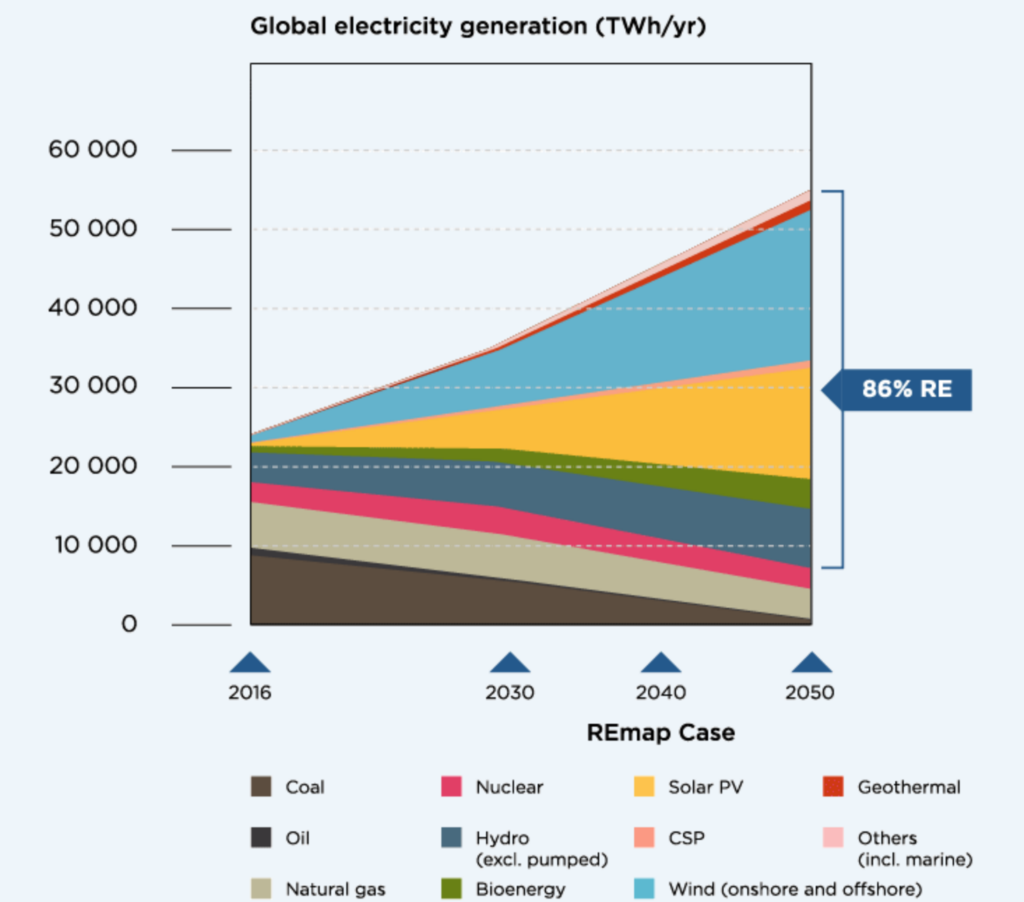Spoiler alert: it is more than just money…
Nowadays the world’s energy system is evolving at a fast pace, but more needs to be done since current progress lags our global climate ambitions to keep a global temperature rise this century well below 2 degrees Celsius. According to the UN’s International Renewable Energy Agency (IRENA), if we want to meet this goal “annual energy-related CO2 emissions need to decline 70% below today’s levels by 2050”. Also, IRENA is telling us that renewables and energy efficiency can provide 90% of the necessary CO2 energy-related reductions. Then the question is “What is preventing us from integrating the increasing percentage of renewable energy generation and scaling up electrification?” The answer is very really simple: Infrastructure investment = Money + Political Willingness (Policy makers).

Of course, we are thinking about the generation of renewable energies, but it is crucial that we also think about what happens after the energy is generated: Transmission and Distribution. This is why policymakers matter; because we need to also enhance the actual grid (usually public infrastructure) to support and integrate the growing percentage of renewables and distributed energy systems that can promote electrification for business and residential demands, such as the electrification of transport.

A couple of days ago BloomberNEF published its annual Energy Outlook, a report where it is analyzed the future of the energy economy, focus on 2050. In this latest issue, BloomberNEF predict the following:
Reducing emissions well below two degrees under our clean electricity and green hydrogen pathway requires between $78 trillion and $130 trillion of new investment between now and 2050. That’s around $64 trillion on power generation and the electricity grid for direct electricity provision, and between $14 trillion and $66 trillion on hydrogen manufacturing, transport and storage.
BloomberNEF, 2020
This is a lot of money and that is why tough and influential policy leadership will be crucial here to take care of such investments. The generation of renewables will not be the constraint to solve the problem: we have the scientific knowledge, the technology, the financial means, and human resourcefulness to tackle climate change. As LM Wind Power’s VP of Engineering, Hanif Mashal said in a recent interview: “The private sector is ready to flatten the emissions curve — what we need to succeed is leadership and global political will.” Without this kind of leadership we risk having all the renewable energy we require, but with nowhere (transmission and distribution improved networks) for it to go.

As we say in Costa Rica, “the ball is in our side”. This is a major responsibility of all of us as global citizens despite the fact of what country or region we come from. We have now to decide what people we want to lead us in this political revolution. Who are we choosing then?
-Charlie!
References:
1. BloombergNEF (2020). “New Energy Outlook: Executive Summary”.
2. Business Insider (2020). “Here’s why renewables need better distribution and transmission”: https://www.businessinsider.com/sc/how-cities-can-be-more-sustainable-with-renewable-energy-2020-10?r=US&IR=T
3. International Renewable Energy Agency (2019). “How to transform the energy system and reduce carbon emissions”: https://www.irena.org/DigitalArticles/2019/Apr/How-To-Transform-Energy-System-And-Reduce-Carbon-Emissions
4. United Nations Climate Change (2019). “The Paris Agreement”: https://unfccc.int/process-and-meetings/the-paris-agreement/the-paris-agreement